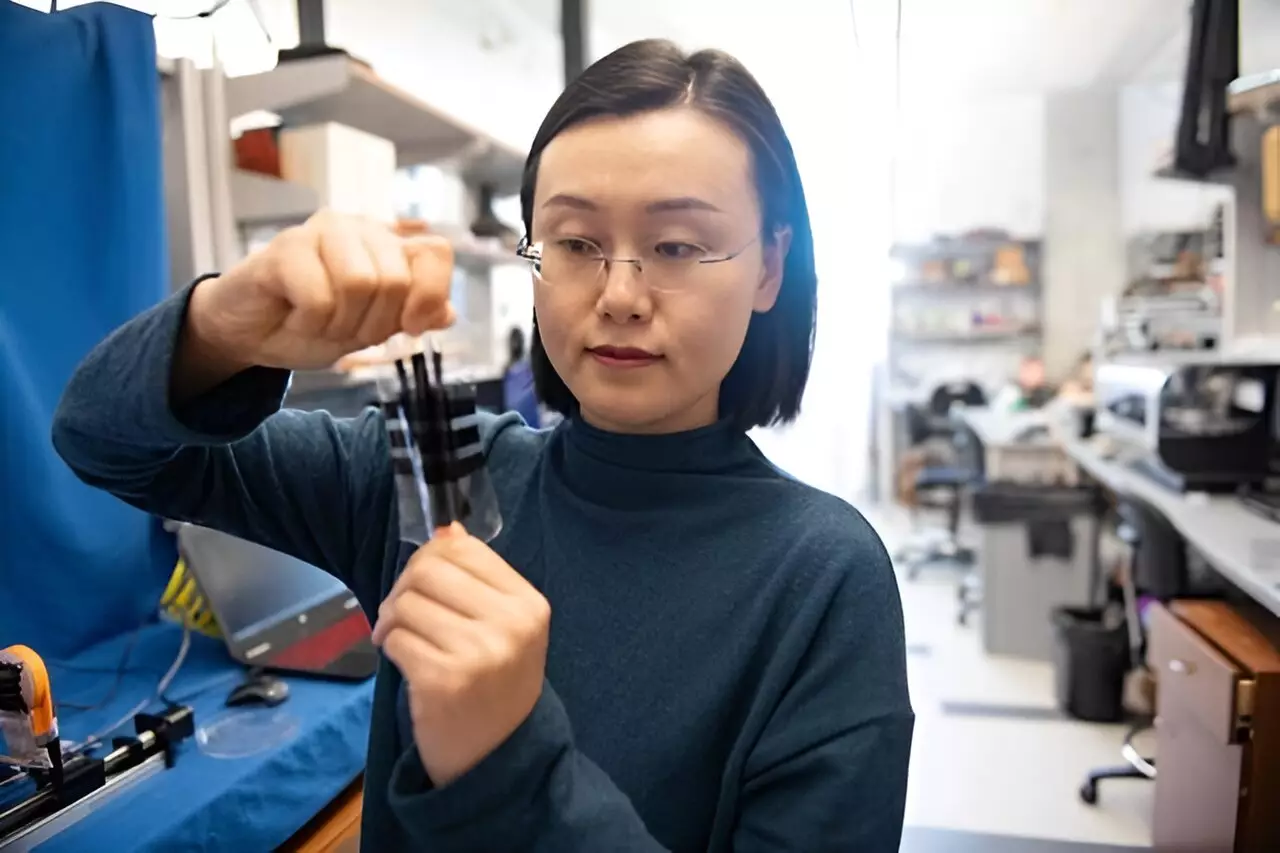

The development of a first-ever stretchy electronic skin by researchers at The University of Texas at Austin is poised to revolutionize the field of robotics. This breakthrough technology equips robots and other devices with softness and touch sensitivity similar to human skin. The stretchable e-skin opens up new possibilities for performing tasks that require precision and control of force, addressing a major bottleneck in the emerging technology.
Unlike conventional e-skin technologies, the new stretchable e-skin maintains sensing accuracy even as it stretches. This innovation is critical as it mimics the flexibility and resilience of human skin, enabling robots to interact with the environment more effectively. Professor Nanshu Lu, leading the project at the Cockrell School of Engineering, highlights the significance of this achievement in creating a robotic hand with human-level softness and touch sensitivity.
The implications of stretchable e-skin extend beyond robotics, with potential applications in healthcare and disaster response. In the field of medical care, robots equipped with this technology could assist in tasks such as monitoring patient vitals, providing massages, or offering gentle care to individuals. With a growing aging population worldwide, the need for efficient and compassionate caregiving solutions is paramount, making robots an essential component in filling this gap.
Furthermore, in disaster scenarios such as earthquakes or building collapses, robots with stretchable e-skin could play a crucial role in locating and aiding injured or trapped individuals. By sensing pressure and adjusting force accordingly, these robots can administer life-saving measures such as CPR with precision and accuracy, showcasing the versatility and potential impact of this innovative technology.
One of the key advantages of the stretchable e-skin is its ability to adapt to various tasks through shape-shifting capabilities. Demonstrations have shown that inflatable probes and grippers can change shape to perform sensitive touch-based actions, such as capturing pulse waves or grasping delicate objects without causing damage. The integration of innovative hybrid response pressure sensors, along with stretchable insulating and electrode materials, has been instrumental in making this advancement possible.
The collaborative efforts of researchers, including those from diverse departments such as Biomedical Engineering, Electrical and Computer Engineering, and Mechanical Engineering, have paved the way for the development of stretchable e-skin. With a provisional patent application already filed, the research team is exploring potential applications in collaboration with robotics experts. The goal is to bring this transformative technology to market, bridging the gap between human interaction and robotic capabilities in a wide range of fields.
The advent of stretchy electronic skin represents a significant leap forward in robotics, enabling machines to interact with the world in a more human-like manner. With the potential to revolutionize industries such as healthcare, disaster response, and beyond, this innovative technology holds the promise of a future where robots can provide precision, gentleness, and efficiency in caregiving and emergency situations. As researchers continue to refine and expand the capabilities of stretchable e-skin, the possibilities for enhancing robotic performance and advancing human-robot interaction are limitless.
Water contamination by nitrates poses a dire threat not only to ecosystems but also to…
When we think of objects entering water, the classic image conjured is of a drop…
Alzheimer’s disease is often thought of as a condition that primarily affects the elderly, yet…
As the Earth's temperature escalates, the Arctic tundra stands at a critical threshold, impacting global…
One of the most mesmerizing predictions stemming from Einstein's theory of general relativity is the…
In a remarkable development that could reshape the landscape of communication for those with speech…
This website uses cookies.